María in the Rear View
One year ago, in the early morning of September 20, 2017, Hurricane María pummeled this little island of Vieques almost beyond belief. The place was clearly not prepared for that kind of sheer power from Mother Nature. Actually, no place is prepared for that, but this one in particular simply couldn’t handle it. The video is from NOAA via Space.com. In it, the little island just to the right of Puerto Rico is Vieques. The storm hit Dominica, then St. Croix, then Vieques, then PR.
Immediately, all of the power lines were on the ground. Wooden power poles were snapped like twigs and others were simply blown over (because they weren’t planted deep enough). All of the phone lines went down with them. All of the cell towers were destroyed. The water system requires electricity so there was no water or sewage sanitation. There was no food coming in because the ferries couldn’t run from the PR mainland due to high seas and damaged ports. There was no fuel for cars and generators (if you had one) because of those same ferries. And roads weren’t passable anyway. If you lived in a wood-frame house, you were almost certainly homeless. Planes weren’t flying either, because of damage at the airports on both sides of the water. The last big hurricane here was in 1989 (Hugo) so my guess is that hurricane prep wasn’t as tight last year as it is this year. Even if it was, the strength of this storm wouldn’t be fended off simply with some food and water stored in the spare bedroom.
Stop for a second to imagine those feelings of isolation and fear. That first week must have been hell. Deb and I were fortunate to not be here when it happened, but almost all of our new friends and neighbors here went through it the hard way, hunkered down and praying. They carry the emotional scars of those feelings to this day. Believe me, PTSD is real in this place.
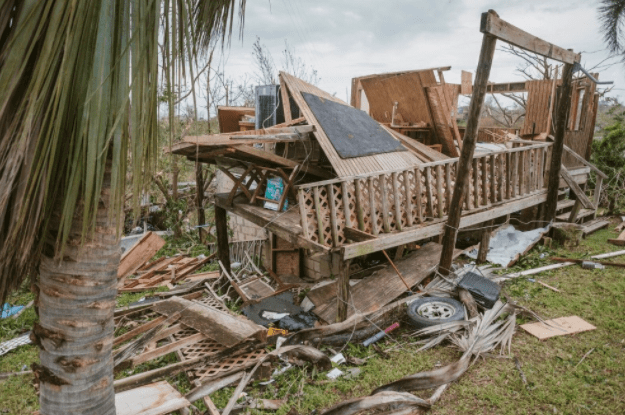
Once the worst of it passed, there was nothing for them to do but to take account of the situation and for those who could, go help their neighbors. So that’s what they did – they found their neighbors and helped them, shared food and water, cleared roads, and generally just figured out what needed to be done. 9000 residents shared 4 satellite phones between them, so they could let their relatives know they were still alive. They formed volunteer groups and solicited donations for all those in need. It was exhausting, dirty, and difficult work, made worse by the lack of water and power, and the hot, humid weather. And when it got dark, it got really dark, with very few generators, little fuel, and only batteries to light things up. It was truly the worst of times for this island.
But through all that work, all that effort, all those tears, it took a little time but hope started to take hold. Folks could start to see this wasn’t going to be the end for them. Help started to arrive bit by bit, but mostly they did it themselves. They started to rebuild, slowly but surely, day by day, week by week, and that turned into months of real recovery. Progress was steady, visible, measurable.
By the time we showed up in January of this year, 4 months after the storm, our neighborhood had power from FEMA generators and water (though much of the island still didn’t at that time). Within a couple of weeks we had Internet installed at home and we had the elusive trifecta! In another 3 or 4 months the rest of the island was also powered by those welcome but unreliable diesel generators.
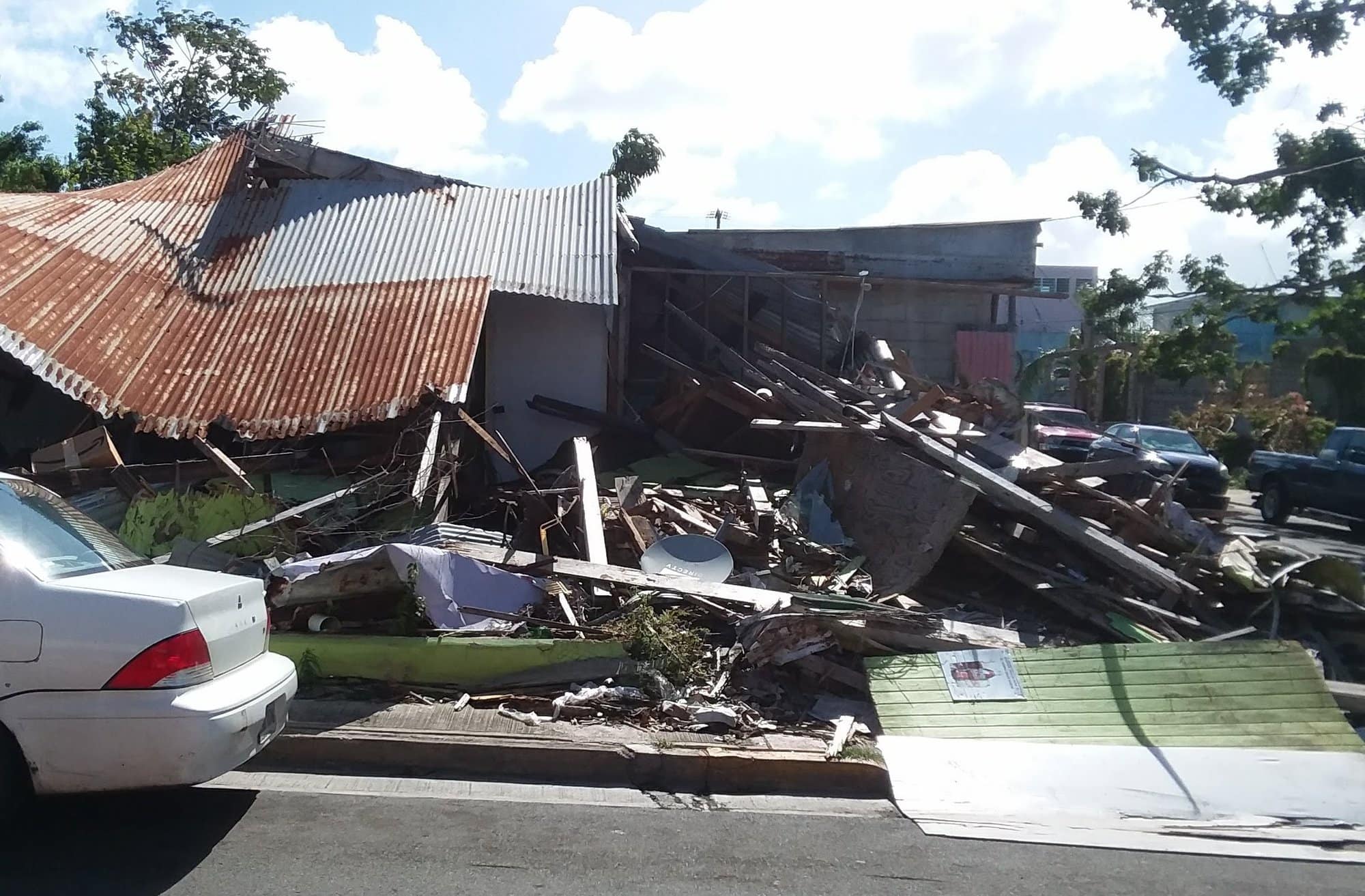
The whole place was pretty rough around the edges but it didn’t scream “devastation” to us. In fact, even with all the obvious damage it compared favorably to the Honduran islands we’d just left. It looked like a prize fighter that had had a rough day, but a fighter that would be back fighting, was already back fighting. We’re proud to know this gang of fighters, to live amongst them, to call them friends.
But at this point one year later, the main island of Puerto Rico, our sister island Culebra, and Vieques are all still in recovery to some extent. This kind of disaster doesn’t just heal itself, or go away quickly. And the ineffective government response at all levels has made it much worse for Puerto Ricans and transplants alike. It’s my opinion that the people here have suffered from incompetence at the federal government level, and a mix of incompetence and deep corruption in PR, from the Governor’s office down to local Mayors.
For example, here is a picture of millions of bottles of water sitting on an airport runway in Puerto Rico. It’s been sitting there since the fall of 2017, not going to help anyone, just sitting. FEMA now says it is “excess” water, with no purpose now, and the local governments don’t know anything about it. It’s just a big waste and nobody was helped by it.

Millions of one-year-old bottles of water, photo from CBS News
But that’s just one example. On a more local level, all sorts of shenanigans are coming to light, like shipping containers full of supplies disappearing for months, only to show up on the Governor’s friends’ properties. And rumors of politicians buying favors with this federal aid aren’t coming from nowhere. This is how it works down here, in good times and bad. And when someone is exposed, the system seems to be set up for them to wiggle out. For example, the Mayor of Vieques was removed from office for his lack of action and response to the storm (people said he actually went to the bar and got drunk while residents suffered). But he was reinstated later, not because the charges were false, but because the government body that took action apparently didn’t have the legal authority to remove him. At least that’s what was made public.
Others, for example in the state-run ferry system (ATM), have been charged with various crimes of corruption to great fanfare, and then later the charges are quietly dropped. The local Rotary club made an offer to the Mayor here to rebuild the concrete handrails and balustrades on the waterfront, FOR FREE. His response? “No, we’ll wait for the insurance money”. Because you see, you can’t divert “free” to your buddies. And the beat goes on.
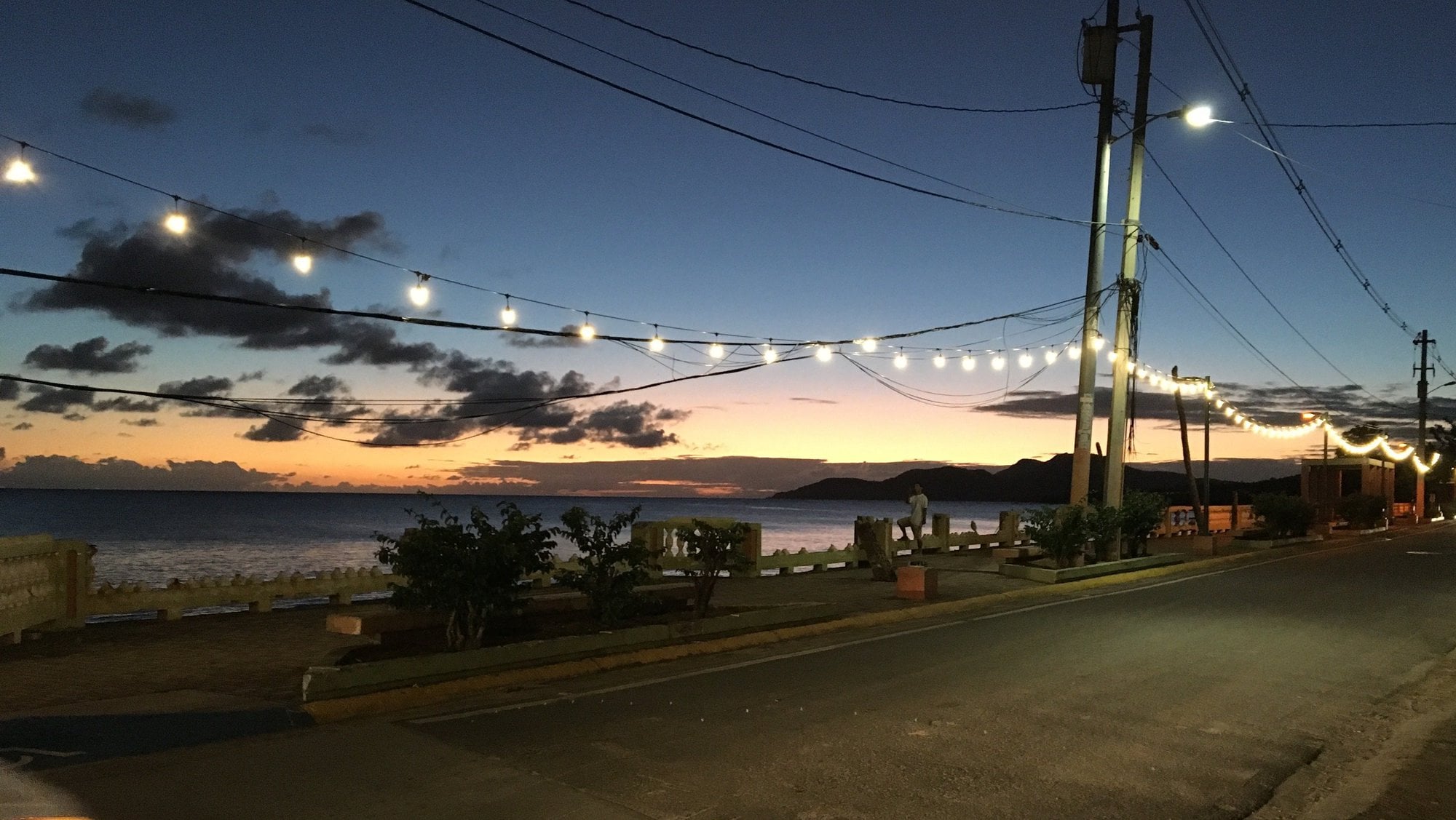
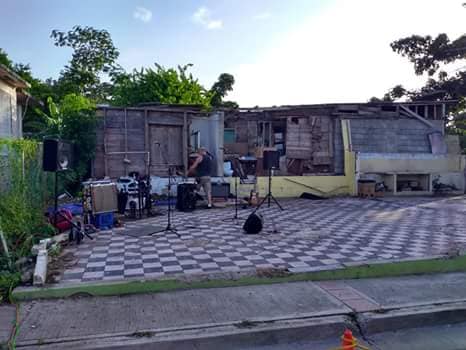
So how do we get past all that and move on? How do we put Maria in the rear view mirror? It takes leadership, motivation, and resolve. The leaders on this island are mostly not in the municipality, they are in the community – business owners, property owners, non-profit leaders, and they go about their business building things back up. They work together to make this place the way it was, the way it should be, and you know, they really are winning this fight.
One of the most common questions we get asked to this day is this: “So, has the island recovered yet?” But our answer isn’t black and white, because it’s an ever-changing scene. Now if the question is: “Should we come visit now?” then our answer is a resounding yes! I say that because the island has definitely regained it’s charm and once again delivers the laid-back vibe it became semi-famous for.

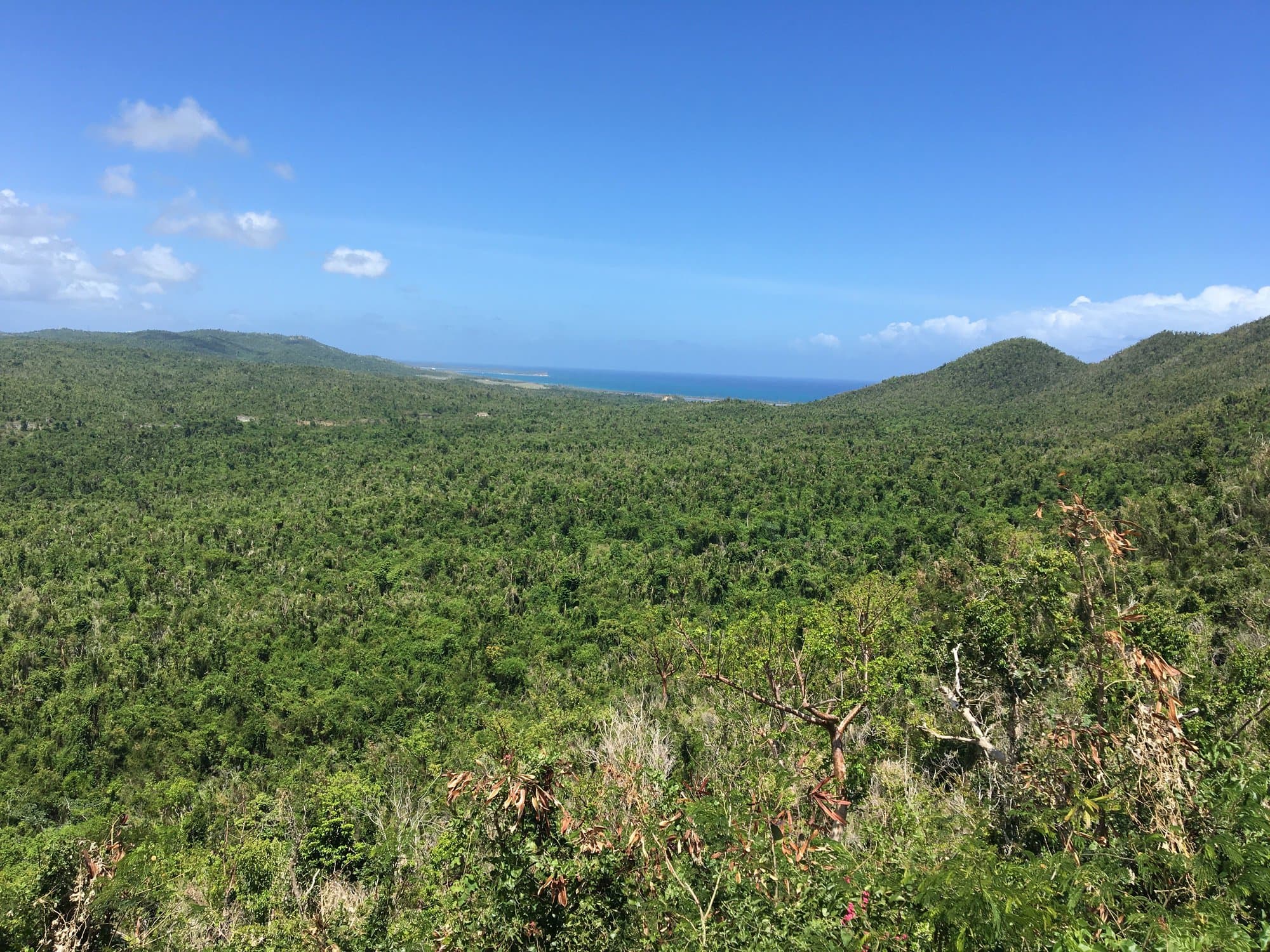
Note that right now in Vieques it is a very quiet time, the middle of September, the heart of hurricane season. We haven’t had any real close storm threats yet this year, but it certainly keeps tourists away. It also allows some of the local business owners to take a break, to take a little time off to rest up or to renovate. Some of the restaurants and bars have closed for a few weeks, with plans to start back up in October and certainly things will be full speed ahead in November.
The power was very sketchy for months after we came, as noted in the NY Times Travel article that we were lucky enough to be quoted in. But the power finally settled in to a pretty reliable state in June and has been that way since. Even though on occasion the residents may lose power and have to adjust (like us with our solar backup), tourists would likely not notice because hotels and restaurants, etc. all have backup generators. And even though the airport remains a little beat up by the storm, it’s been fully operational for months so getting here is no problem.
If you are looking for great accommodations, then you will find this in all the places you would expect, with one notable exception. The W Hotel, the only “resort” on Vieques remains closed, and the latest talk now is that it may be another year before it reopens. There is no power at the W, and the island generators don’t have the capacity to provide it. So, no power, no rebuilding. There is a lot of complexity around this, and finger pointing with the municipality, but so far no real progress.
There are also a small number of local places that remain closed for renovations or perhaps closed for good, but unless one of those was a personal favorite, the typical visitor wouldn’t even notice. Almost all of the smaller hotels, BnBs, hostels, AirBnBs, are up and running, having used the down time to spruce things up. A nice place to lay your head is certainly ready and available.
If it’s dining you’re after, the restaurants that give Vieques its unique flavor are up and cooking. You can enjoy wonderful food in Isabel II, in Esperanza, and across the island. Seafood and Puerto Rican food (Cocina Criolla) are the most popular but there are eclectic twists all around as well, like for example the BBQ restaurant with great sushi and fresh vegetables grown out back… There are lots of places we have yet to try because as you know, we cook at home a lot. So we’re not running through the restaurant list checking off dozens of places. But we will get to them in time! There are still a few restaurants that continue renovations and will open soon, but today you can find plenty of great meals around the island.
You can rent cars, jeeps, or golf carts to get around, but make sure you keep an eye out for the iguanas, chickens, and especially horses. You don’t want to run into any of them, but I guarantee a horse collision will ruin your whole day (not to mention the poor horse!). But with some wheels and the willingness to get out and hike, you’ll be able to tour the island and see the old Navy Bunkers, The Puerto Ferro Man, Black Sand Beach, Mount Pirata, the old Navy pier, the Fort, the Bioluminescent Bay, a couple of lighthouses and even a waterfall. There are lots of places we still need to explore ourselves. We shouldn’t forget also that the snorkeling is great, as are fishing, boating, diving, etc if you so desire. And there are jet-skis, paddleboards, kayaks, scooters, etc. to rent. This website, Vieques Ready When You Are, tells it far better than we can.

And as we’ve shown, the beaches are spectacular, with maybe a bit more wildness to them than before the storm (especially in the Wildlife Preserve). There are some places that are still not open because U.S. Fish & Wildlife still has to screen them and make them safe, but that hasn’t really slowed us down. We’ve personally visited Sun Bay, Caracas, Playuela, Pata Prieta, Playa Negra, Navio, El Gallito, Airport Beach, Sea Glass Beach, Starfish Beach, Monte Santo Playa, Playa Esperanza, Media Luna, La Chiva, and some others we can’t identify. So you can see we’re not hurting for beaches! It’s everything from the white sand Caribbean classics to rocky cliffs, red-gold sand, to all natural beaches that will make you think you dropped into the set of “Lost”, or maybe “Lord of the Flies” which was filmed here way back in the day.
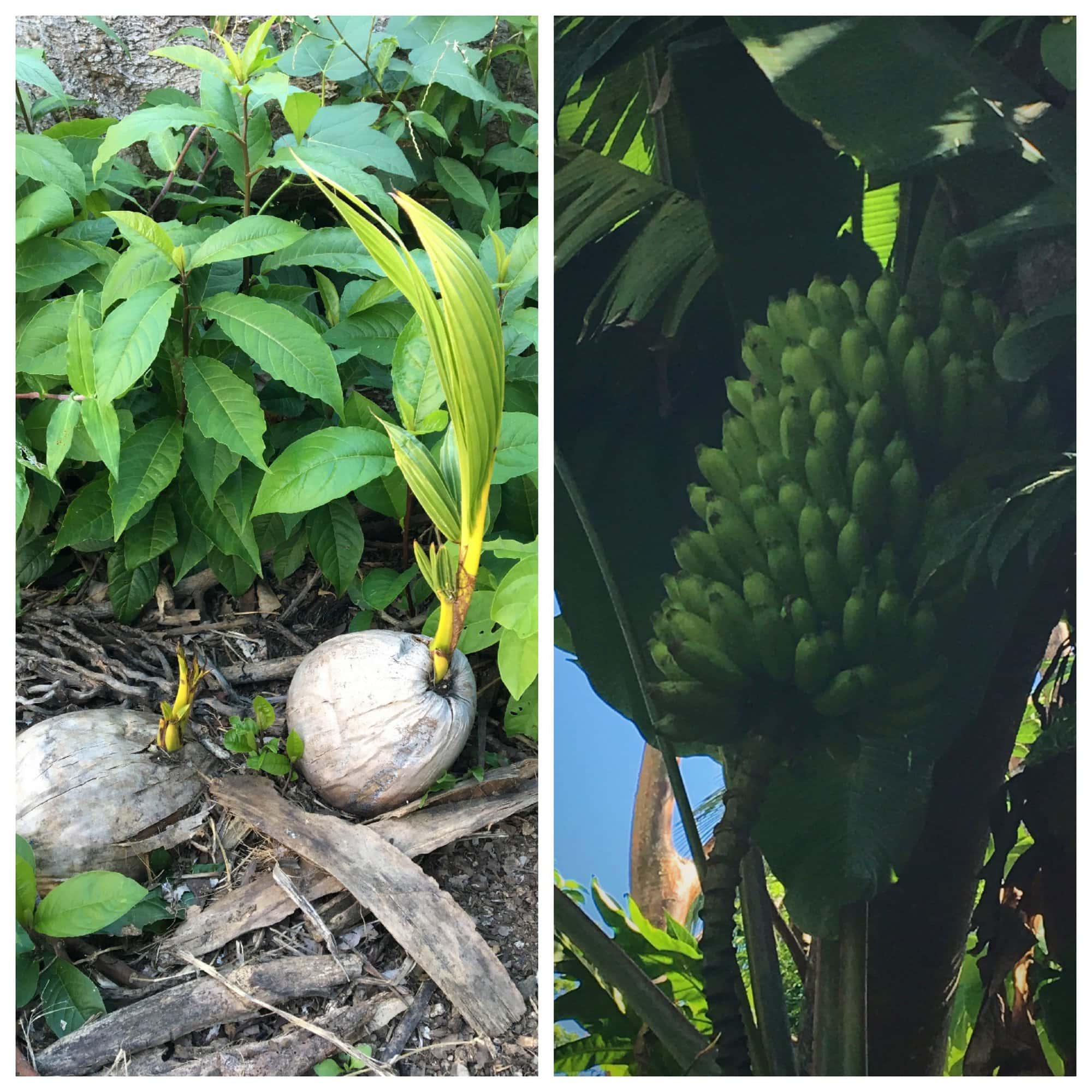
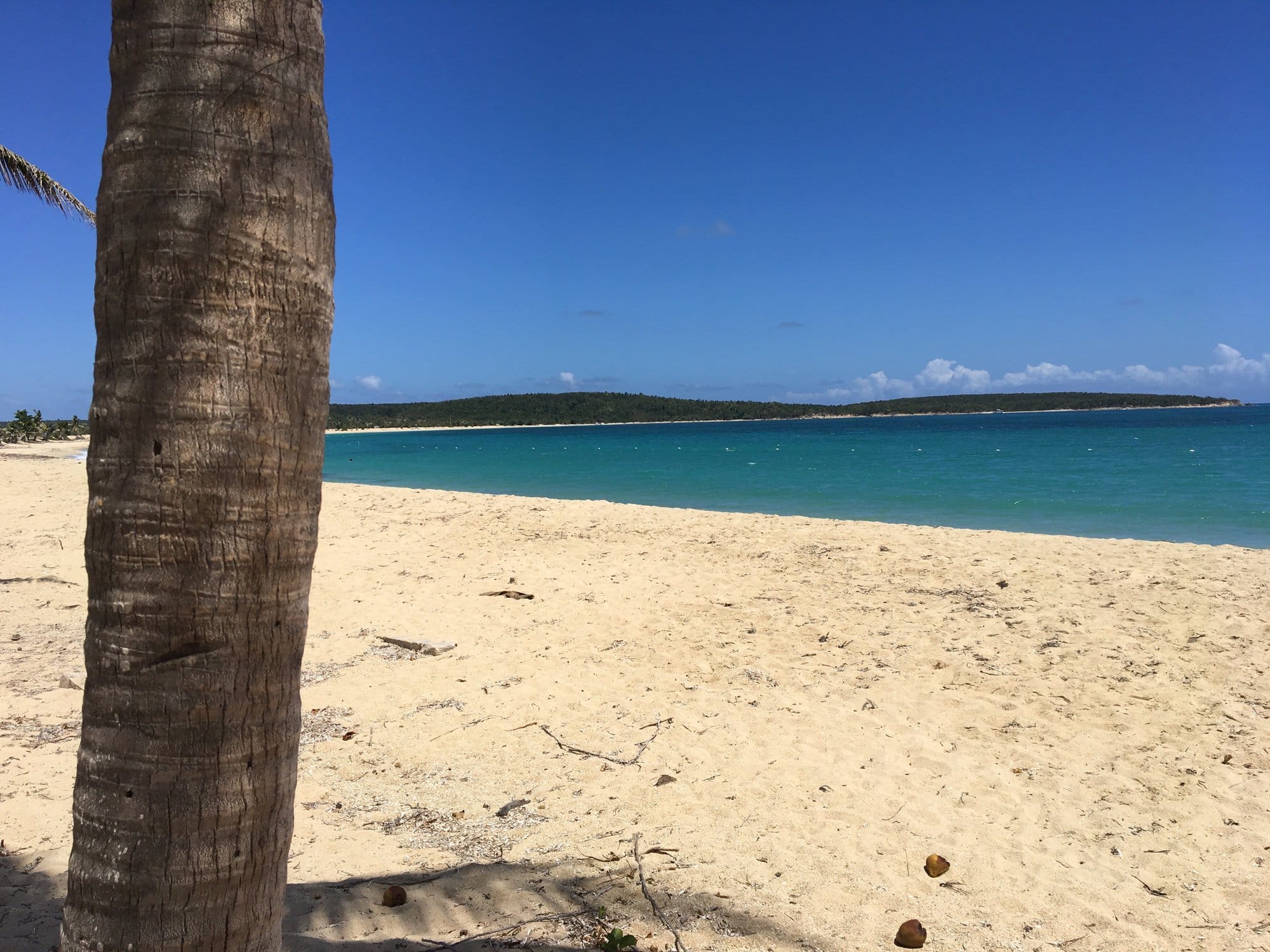
So the answer to the question “has the island recovered?” isn’t black and white. To our eyes, it’s more a smooth blend of turquoise water and white sand. And that’s recovered enough for us. If you appreciate “laid back” the way we do, then Vieques delivers.
Adiós Maria. Wouldn’t wanna be ya. Hope to never see ya.
TODAY’S SPECIAL: “Every Heart” by Kenny Chesney. Every heart is an island, every tear is an ocean.

Wow. Very well written. A fitting adios to Maria.
I’m halfway through “We Fed an Island” by chef Jose Andres. The near complete lack of US assistance after Maria is shocking.
Thanks Kevlar! The US assistance wasn’t non-existent, it was just slow arriving and randomly organized, if that makes any sense. Best I can tell, the FEMA model is to deliver aid in many forms to the central government, and rely on them to distribute it. But that falls perfectly into the PR corruption machine – “oh yes, I’ll take care of that for you, thank you very much!”. No checks and balances and to be honest, if there were, the aid would have been even slower. I will say, between FEMA and the US Army Corp of Engineers, and the US Coast Guard, some amazing things happened. There are incredible numbers of good people in those organizations. It’s the management of the thing that’s in question, at all levels. So, thankful for what we got, but wishing for more and quicker assistance. In the meantime, private people and groups took care of each other, like Chef Jose Andres did.